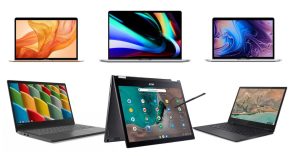Can You Use Wireless Headphones On A Plane?

Wireless headphones and Bluetooth headphones have grown in popularity in the recent past and it’s natural that people will want to wear them on long flights – but are they allowed? Read on as we delve into details from TSA and FAA rules. According to the TSA, you are allowed to bring headphones (including wireless headphones) with you in your checked luggage or carry-on bag when traveling by plane. However, you’ve probably heard of the ban on electronics that transmit radio waves imposed by airlines. The ban prohibits air travelers from using wireless or Bluetooth devices that are larger than a smartphone. However, there is more to it.
According to the FAA, any device you bring to a plane must be operated in airplane mode, or you should disable the cellular connection. However, you can use the WiFi connection on the device, but only if the plane already has an installed WiFi system, and if the airline allows it. In 2013, the FAA gave the green light on airplane passengers using Bluetooth devices. However, it all boils down to what each airline decides.
Major American airlines have nothing against allowing passengers to operate Bluetooth devices throughout a flight, though some do not address it in their policies specifically. Carriers such as Delta, Southwest, and JetBlue allow passengers to use wireless accessories such as keyboards and wireless headphones during flights – as long as cellular service (if applicable) is deactivated. However, they prohibit the use of Bluetooth devices that connect to a laptop or tablet during landing or takeoff. As such, these devices have to be turned off and stowed at the start and end of a flight.
International Rules On Bluetooth Headphones, Other Devices Differ

International airlines and airlines based in other countries operate on their own rules. For instance, British Airways allows passengers to use Bluetooth devices during a flight but not during takeoff, landing, or taxiing. Air Canada, on the other hand, allows wireless headphones, but only when the plane has reached 10,000 feet – and if the battery on the wireless headphones are removable. They do not allow passengers to use wireless computer mice at all. Lufthansa, a German carrier, allows its passengers to use their wireless headphones during the whole flight, even during landing or takeoff. Emirates and Qatar Airlines prohibit the use of wireless earbuds for passengers traveling to the US. Additionally, Turkish Airlines list the use of headphones on their list of prohibited items.
The main reason for the banning of wireless headphones by airlines is safety. They want to avoid scenarios where travelers are stuck and helpless, especially in potentially dangerous situations. For instance, noise-canceling headphones are prohibited by some airlines because the traveler wearing them might fail to hear lifesaving instructions in the event of danger. If you want to be on the safe side with most airlines, switch off your Bluetooth during taxiing, take-off, and landing. Further, the device you are connecting with must also be in flight mode during the entire flight. As such, the device you are using to connect with your wireless headphones should be able to connect to them, even on flight mode.
Know that when you select flight mode, it automatically switches off all connections, including Bluetooth. However, in most devices, there’s the option of turning on Bluetooth manually even after switching on flight mode. Your airline might have an entertainment system, and you might not be able to connect to it with your wireless or Bluetooth headset. This means that you have to use a wired connection.
Generally speaking, the use of wireless headphones is not entirely prohibited. In most cases, you are free to use them on a flight. Just avoid using them when the plane is taxiing, taking off, and landing. Also, ensure that your mobile device is in flight mode and that all cellular connections are turned off.
















